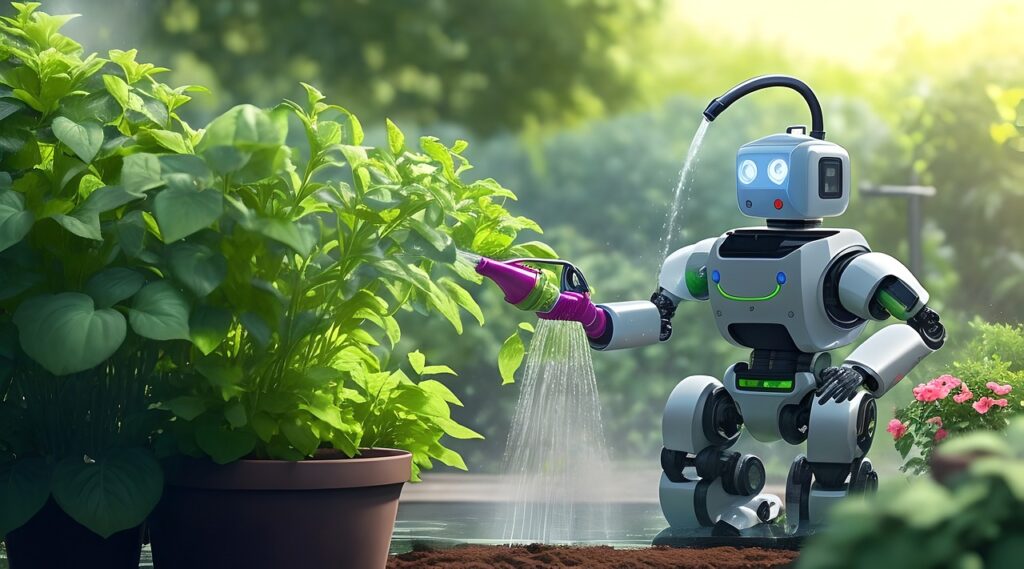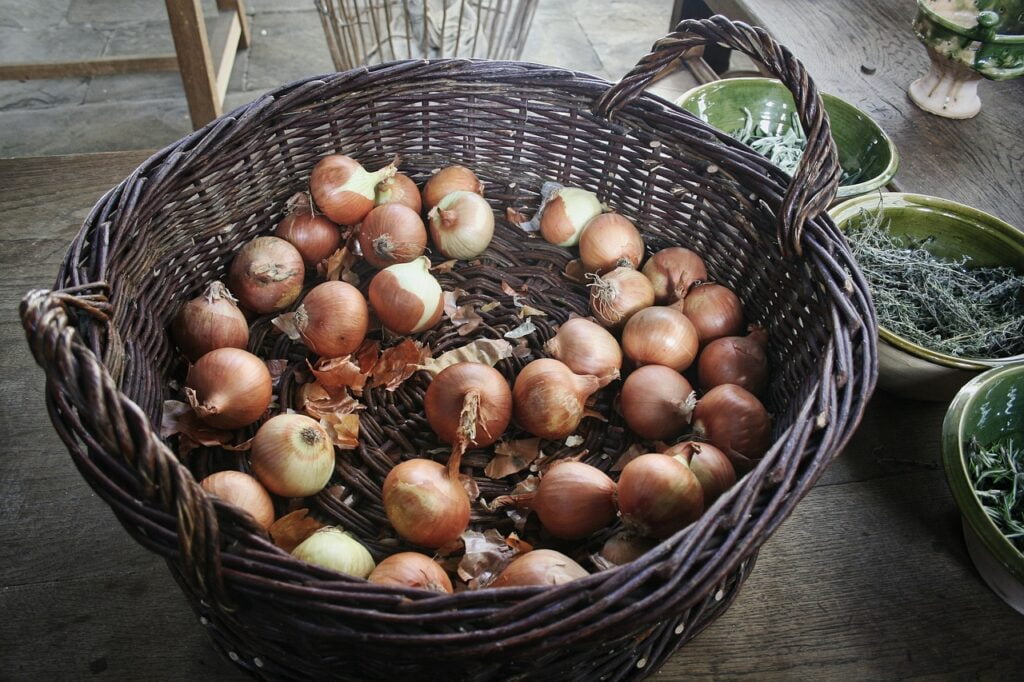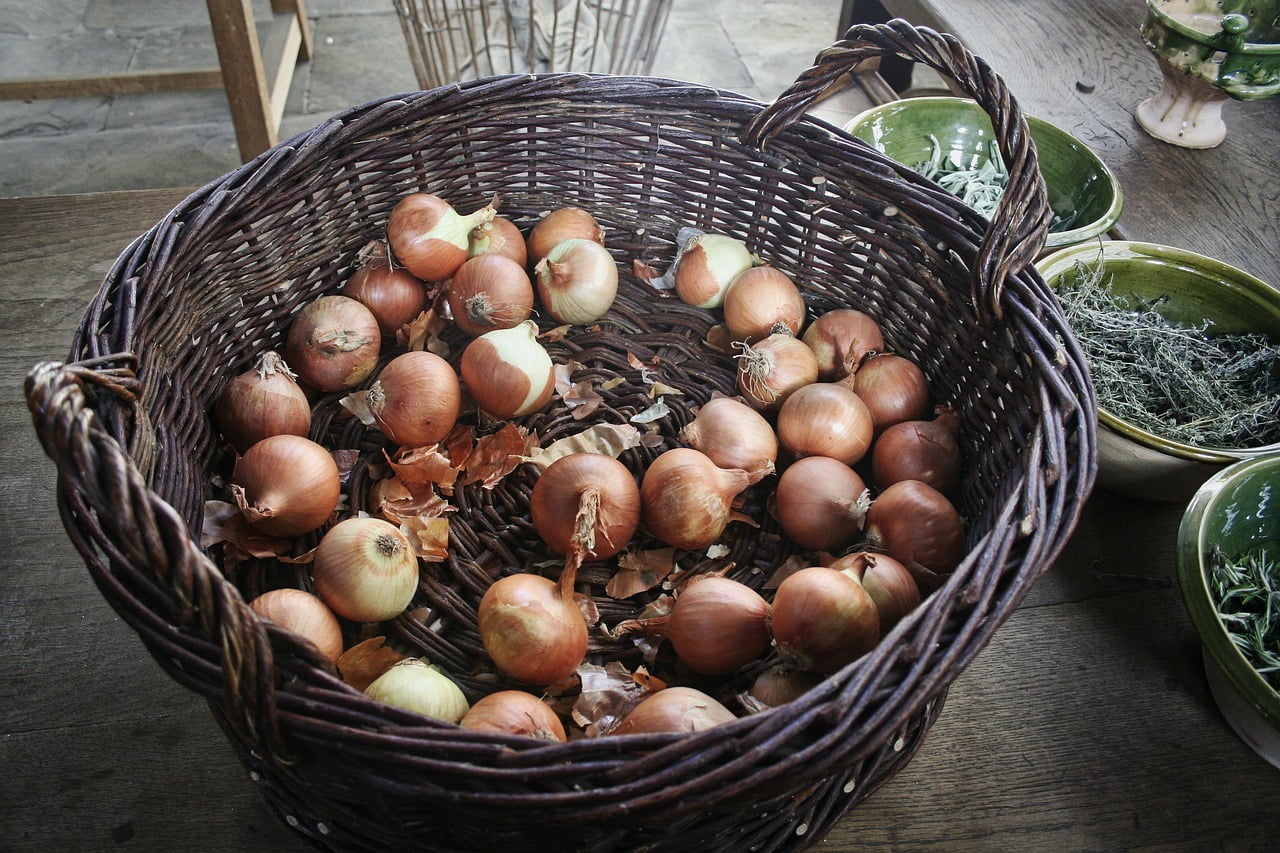Imagine transforming your dull, unused rooftop into a vibrant and eco-friendly oasis. Creating a sustainable rooftop garden design not only adds a touch of beauty to your urban space but also promotes environmental benefits. From reducing air pollution to providing insulation, a well-designed rooftop garden is an excellent way to give back to nature while enjoying a peaceful getaway right at your fingertips. In this article, we will explore the essential steps and considerations to help you create a sustainable rooftop garden design that will not only transform your space but also contribute to a greener planet.

This image is property of pixabay.com.
Choose the Right Plants and Materials
Selecting Native Plants
When creating a sustainable rooftop garden design, one of the first steps is to choose the right plants. Opting for native plants is a smart choice as they are naturally adapted to the local climate and require less maintenance. Native plants also provide essential habitat for local wildlife, promoting biodiversity in your rooftop garden. By choosing native plants, you can create a more sustainable and resilient garden that will thrive in its environment.
Using Eco-Friendly Materials
Another important aspect of sustainable rooftop garden design is selecting eco-friendly materials. Instead of conventional synthetic materials, consider using natural and recycled materials for your garden structures and decor. For example, opt for sustainably sourced wood for raised beds and trellises, or use reclaimed materials such as bricks or stones for your walkways. By using eco-friendly materials, you not only reduce your environmental impact but also create a visually appealing and natural-looking garden.
Considering the Weight Restrictions
Before diving into the design process, it is crucial to assess your rooftop’s weight restrictions. Different rooftops have varying weight capacities, and it is important to ensure that the selected plants and materials do not exceed this capacity. Consult with a structural engineer or a professional rooftop garden designer to determine the weight restrictions and design your garden accordingly. This step ensures the safety and longevity of your rooftop garden and avoids any potential damage to the structure.
Assess Your Rooftop Environment
Analyzing Sunlight and Shade
Understanding the sunlight and shade patterns on your rooftop is essential for placing the right plants in the right spots. Observe your rooftop throughout the day to determine which areas receive full sun, partial shade, or full shade. This knowledge will help you choose plants that thrive in specific light conditions and create a well-balanced garden design.
Examining Wind and Weather Conditions
Rooftops are often exposed to strong winds, so it is important to take this factor into consideration when designing your garden. Some plants may not tolerate windy conditions, while others may actually thrive in it. Select wind-resistant plants that can withstand the rooftop environment and minimize the risk of damage to your garden. Additionally, consider the weather conditions in your area, such as heavy rainfall or extreme heat, and choose plants that are well-suited to these conditions.
Checking for Water Drainage
Proper water drainage is crucial for the health and longevity of your rooftop garden. Ensure that your rooftop has adequate drainage systems in place to prevent water accumulation and potential damage to the structure. Consult with a professional if necessary to assess the existing drainage system and make any necessary improvements. Proper water drainage will help your plants thrive and prevent any water-related issues.
Create a Proper Irrigation System
Planning for Efficient Water Usage
Water conservation is an important aspect of sustainable rooftop garden design. Plan for efficient water usage by choosing plants that are drought-tolerant and have low water requirements. Group plants with similar watering needs together to optimize water usage and reduce water wastage. Additionally, consider implementing water-saving techniques such as mulching to retain moisture in the soil and minimize evaporation.
Installing Drip Irrigation
Drip irrigation is a highly efficient watering method that delivers water directly to the plant’s root zone. By installing a drip irrigation system, you can ensure that your plants receive water precisely where they need it, minimizing water loss through evaporation or runoff. Drip irrigation also helps to maintain consistent soil moisture levels, promoting healthier plant growth and reducing the risk of overwatering.
Utilizing Rainwater Harvesting
Take advantage of rainwater by implementing a rainwater harvesting system in your rooftop garden. Install rain barrels or cisterns to collect and store rainwater, which can then be used for watering your plants. Rainwater is naturally free of chemicals and contaminants, making it an ideal choice for irrigation. Utilizing rainwater harvesting not only reduces your reliance on municipal water sources but also helps to conserve water resources.
Implement Vertical Gardening Techniques
Using Vertical Planters or Trellises
Vertical gardening is a great way to maximize space in a rooftop garden. Use vertical planters or trellises to grow plants upwards, taking advantage of the vertical dimension of your rooftop. This technique is especially useful for vining plants such as tomatoes, cucumbers, or beans. Vertical planters and trellises not only save space but also add a visually appealing element to your garden design.
Maximizing Space with Hanging Gardens
Another way to optimize space in your rooftop garden is by utilizing hanging gardens. Hang baskets or pots from sturdy supports to create a lush and vibrant display of flowers or herbs. Hanging gardens can be particularly helpful if your rooftop has limited floor space. By thinking vertically and incorporating hanging gardens, you can make the most of every inch of your rooftop garden.
Growing Vines and Climbers
Growing vines and climbers on your rooftop garden can provide both aesthetic appeal and functional benefits. Vines such as ivy or climbing roses can soften the appearance of walls or structures, adding a touch of natural beauty. They can also provide shade and insulation, reducing the energy consumption needed to cool your building. Additionally, vines and climbers attract beneficial insects and contribute to overall biodiversity in your rooftop garden.

This image is property of pixabay.com.
Ensure Adequate Drainage and Waterproofing
Installing Proper Drainage Systems
Proper drainage is crucial to prevent water accumulation and potential damage to your rooftop. Install a drainage system that captures excess water and directs it away from the rooftop’s structure. This can include installing gutters, downspouts, and drains to efficiently channel water to appropriate outlets. By ensuring adequate drainage, you can avoid water-related issues that may compromise the integrity of your rooftop garden.
Applying Waterproof Membrane
Protect your rooftop and the underlying structure by applying a waterproof membrane. This barrier prevents water from seeping into the rooftop and causing damage. Consult with a professional to determine the most suitable waterproofing method for your rooftop garden. Applying a waterproof membrane is essential to ensure the longevity and sustainability of your garden.
Preventing Water Damage
Alongside proper drainage and waterproofing, it is important to take additional measures to prevent water damage in your rooftop garden. Use saucers or trays under potted plants to collect excess water and prevent it from seeping into the roof surface. Regularly clean your gutters and downspouts to ensure they are not clogged, as clogs can lead to water backup and potential damage. By actively preventing water damage, you can maintain a healthy and sustainable rooftop garden.
Consider Energy Efficiency
Implementing Green Roof Technology
Green roof technology involves creating a layered system on your rooftop that includes vegetation, a growing medium, and a waterproofing layer. Green roofs provide numerous benefits, including reduced energy consumption, improved air quality, and enhanced stormwater management. By implementing green roof technology in your rooftop garden, you can contribute to a more sustainable and energy-efficient environment.
Using Insulated Garden Beds
Insulated garden beds are an effective way to conserve energy and create a favorable microclimate for your plants. These beds provide added insulation to the soil, protecting the plants’ roots from extreme temperature fluctuations. As a result, your plants will be better equipped to withstand hot summers and cold winters, reducing the need for excessive heating or cooling. Insulated garden beds contribute to energy efficiency and promote a healthy growing environment for your rooftop garden.
Creating Shade with Plantings
Strategically placing shade-providing plants in your rooftop garden can help regulate temperatures and reduce the need for artificial cooling. Plant tall trees or large shrubs along the southern or western edges of your rooftop to cast shade during the hottest parts of the day. Additionally, consider incorporating pergolas or trellises covered with shade-loving plants to create comfortable seating areas. By using natural shade, you can minimize energy consumption and create a more sustainable rooftop garden.

This image is property of pixabay.com.
Optimize Space and Layout
Planning for Different Zones
When designing your rooftop garden, consider creating distinct zones for different purposes. For example, you may want to have an area dedicated to growing vegetables, another for relaxing or entertaining, and a space for aesthetic plantings. By planning for different zones, you can optimize your rooftop space and ensure that each area serves its intended purpose effectively.
Utilizing Raised Beds or Containers
Raised beds or containers are a practical solution for rooftop gardens as they offer stability, easy access, and efficient use of space. Use raised beds or containers to grow flowers, herbs, or vegetables, and arrange them strategically to maximize sunlight exposure. Additionally, raised beds and containers can help control invasive plants and prevent soil erosion, ensuring a healthy and sustainable garden.
Designing Paths and Walkways
Incorporating well-designed paths and walkways into your rooftop garden not only adds visual appeal but also improves accessibility and functionality. Use materials such as permeable pavers or gravel to allow water to drain through and prevent runoff. Design paths that are wide enough to comfortably walk on, taking into account any furniture or amenities you may want to place along the way. Well-designed paths and walkways enhance the overall experience of your rooftop garden and make it more enjoyable for you and your guests.
Attract Pollinators and Beneficial Insects
Selecting Pollinator-Friendly Plants
To create a sustainable ecosystem in your rooftop garden, it is important to attract pollinators and beneficial insects. Select plants that provide nectar and pollen-rich flowers, such as lavender, sunflowers, or borage. These plants will attract bees, butterflies, and other pollinators that play a crucial role in the reproduction of many plants. By incorporating pollinator-friendly plants, you not only support biodiversity but also increase the productivity of your garden.
Providing Habitat and Nesting Sites
In addition to attracting pollinators, provide habitat and nesting sites for beneficial insects and birds. Install birdhouses, insect hotels, or nesting boxes to encourage wildlife to visit your rooftop garden. Create a variety of vegetation heights and textures to attract a diverse range of insects and birds. By offering suitable habitats, you create a balanced ecosystem and promote natural pest control within your rooftop garden.
Avoiding Harmful Pesticides
Sustainable rooftop garden design prioritizes natural pest control methods over harmful pesticides. Avoid the use of chemical pesticides as they can negatively impact pollinators and beneficial insects, disrupt the ecosystem, and potentially harm human health. Instead, focus on preventative measures such as crop rotation, companion planting, and handpicking pests. Embracing organic pest control methods ensures a healthy garden and contributes to a sustainable rooftop environment.
Implement Organic Gardening Practices
Using Natural Fertilizers and Compost
Organic gardening practices are essential for creating a sustainable rooftop garden. Use natural fertilizers such as compost, well-rotted manure, or organic plant-based fertilizers to nourish your plants. These fertilizers enrich the soil with essential nutrients, improve soil structure, and promote healthy plant growth. Additionally, composting organic waste from your garden or kitchen can reduce waste sent to landfills and provide valuable nutrients for your plants.
Avoiding Chemical Pesticides
As mentioned earlier, avoiding chemical pesticides is crucial for sustainable rooftop gardening. Instead, opt for natural pest control methods such as insect-repelling plants, beneficial insects, or organic insecticidal soaps. By avoiding chemical pesticides, you protect the health of your garden, the environment, and yourself.
Practicing Crop Rotation
Crop rotation is an effective way to prevent pests and diseases, improve soil fertility, and promote sustainable plant growth. Rotate your crops annually, ensuring that plants from the same family are not grown in the same spot year after year. This practice prevents the buildup of pests and diseases and optimizes the use of nutrients in the soil. By practicing crop rotation in your rooftop garden, you can maintain a healthy and productive garden.
Promote Biodiversity and Eco-Friendly Practices
Adding Bird Feeders and Birdhouses
Encourage bird diversity in your rooftop garden by adding bird feeders and birdhouses. Providing food and shelter for birds helps to create a balanced ecosystem and contributes to pest control. Choose bird feeders and birdhouses that are suitable for the bird species in your area, and ensure they are well-maintained and cleaned regularly. By attracting birds to your rooftop garden, you enhance biodiversity and contribute to a sustainable environment.
Integrating Wildlife-Friendly Landscaping
Integrating wildlife-friendly landscaping techniques in your rooftop garden is key to promoting biodiversity and creating a sustainable habitat. Plant a variety of native vegetation that provides food, shelter, and nesting sites for wildlife. Additionally, consider incorporating features such as water sources, such as a bird bath or a small pond, to support biodiversity. By designing your rooftop garden with wildlife in mind, you create a flourishing ecosystem that benefits both the environment and your enjoyment of the space.
Educating Others about Sustainable Gardening
As a rooftop garden enthusiast, share your knowledge and experience with others to promote sustainable gardening practices. Encourage your neighbors, friends, and community members to adopt eco-friendly gardening techniques and create their own rooftop gardens. Spread awareness about the benefits of sustainable gardening, such as conserving water, reducing carbon footprint, and providing habitat for wildlife. By educating others about sustainable gardening, you contribute to a greener and more sustainable future.
In conclusion, creating a sustainable rooftop garden design involves careful consideration of plant selection, materials, environmental factors, irrigation systems, drainage, energy efficiency, space optimization, pollinator and insect attraction, organic gardening practices, and the promotion of biodiversity. By following these guidelines and incorporating eco-friendly techniques, you can create a thriving and sustainable rooftop garden that not only enhances the beauty of your space but also contributes to a healthier environment. Start your rooftop gardening journey today and enjoy the numerous benefits it brings.

